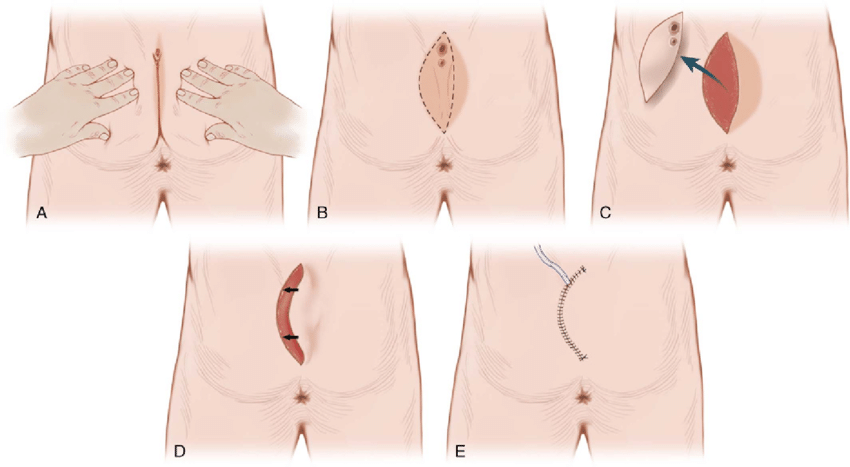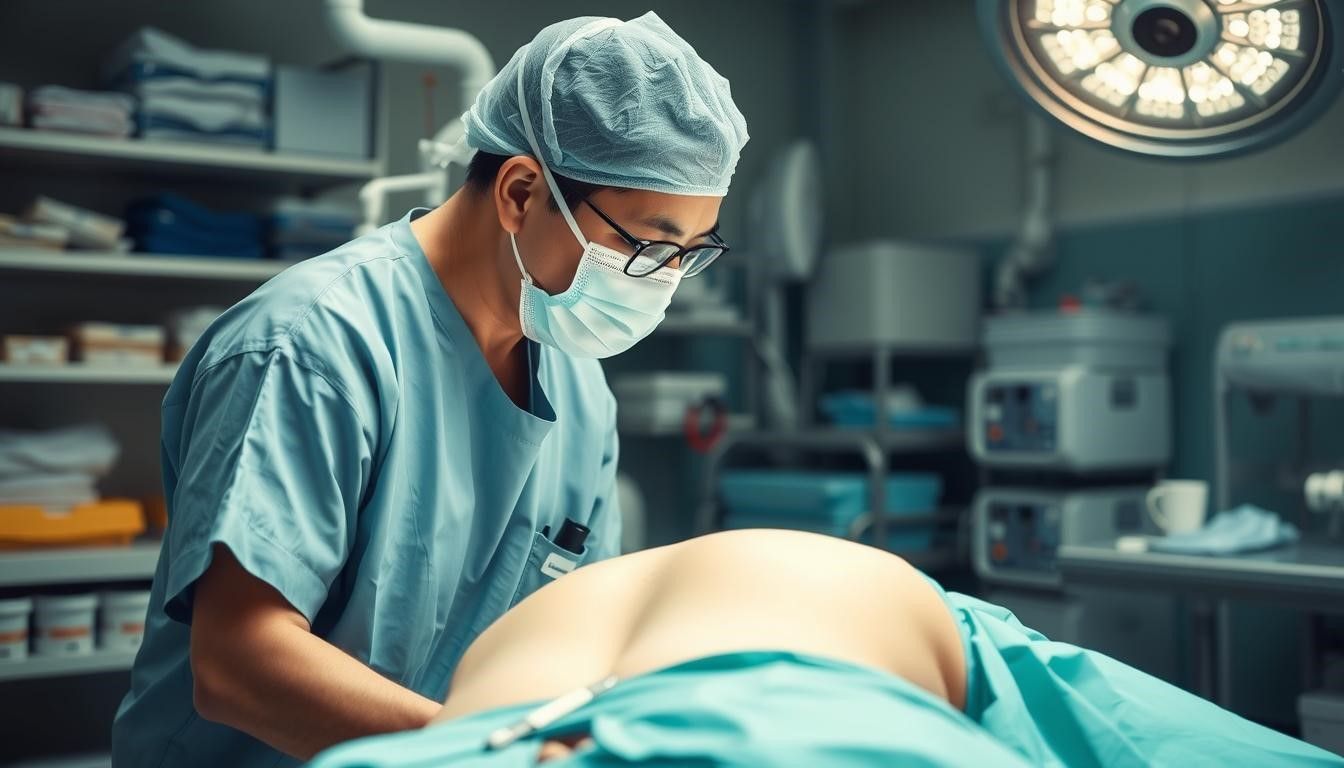Revolutionizing Pilonidal Disease Treatment: Dr. Samuil Rafailov Offers Specialized Cleft Lift Surgery
Pilonidal disease is a painful, chronic condition affecting the tailbone area. Without proper treatment, it can lead to recurring abscesses and disrupt daily life. Traditional surgical methods often have lower success rates, leaving patients frustrated with ongoing issues.

Dr. Samuil Rafailov, a board-certified surgeon, provides an advanced solution—the cleft lift procedure. This technique not only addresses the root cause but also minimizes scarring and recovery time. With a 96.6% to 98% success rate in clinical studies, it stands out as a reliable option.
Unlike older methods with success rates of just 50-70%, Dr. Rafailov’s approach combines medical precision with aesthetic care. His expertise ensures patients receive lasting relief while maintaining natural body contours.
Key Takeaways
- Pilonidal disease is a chronic condition that often requires surgical intervention.
- Untreated cases lead to painful abscesses and frequent recurrences.
- Dr. Samuil Rafailov specializes in advanced cleft lift techniques.
- The procedure boasts a 96.6%-98% success rate in clinical studies.
- It offers better results compared to traditional excision methods.
Understanding Pilonidal Disease: Causes and Impact
Many people don’t realize pilonidal disease starts with something as simple as an ingrown hair. When loose hairs pierce the skin near the tailbone, they trigger inflammation. This creates a painful condition that worsens without treatment.
- Gender: Men are twice as likely to develop it.
- Lifestyle: Sitting for long periods (e.g., desk jobs) increases pressure on the area.
- Body hair: Coarse or thick hair raises the risk.
Contrary to myths, poor hygiene isn’t the main cause. Anatomy plays a bigger role—deep natal clefts trap hair more easily.
| Risk Factor | Impact Level | Prevention Tip |
|---|---|---|
| Obesity | High | Maintain a healthy weight |
| Sedentary Job | Moderate | Take frequent standing breaks |
| Family History | Low | Monitor early symptoms |
Untreated cases escalate quickly. Minor irritation turns into infected abscesses, causing fever and drainage. Traditional treatments fail 26.7% of the time, leading to repeat surgeries.
Chronic infections create sinus tracts—tunnels under the skin that resist healing. Beyond physical pain, this disrupts work and school, fueling frustration.
Meet Dr. Samuil Rafailov: Your Expert in Pilonidal Surgery
Dr. Samuil Rafailov combines precision and artistry in treating pilonidal disease. As a dual board-certified surgeon in general and cosmetic surgery, he addresses both medical and aesthetic concerns. His philosophy ensures patients leave with lasting relief and natural-looking results.
With years of focused experience, Dr. Rafailov tackles complex cases others avoid. He uses ultrasound diagnostics to tailor each treatment, enhancing accuracy. His methods reflect collaborations with leading global specialists, including insights from 500+ cases worldwide.
Patients report a 97% satisfaction rate, citing his attentive care and detailed follow-ups. He regularly shares innovations at international conferences, like events in Berlin and Vienna. This commitment keeps his techniques at the forefront of pilonidal success.
Whether it’s a first-time procedure or a recurrent issue, Dr. Rafailov’s approach minimizes scarring and downtime. His goal? To restore comfort and confidence—one patient at a time.
The Evolution of the Cleft Lift Procedure
Modern pilonidal care owes its success to decades of surgical innovation. In the 1980s, Dr. John Bascom developed the cleft lift, a game-changer for chronic cases. His technique focused on flattening the natal cleft to prevent hair accumulation and infection.
Later, Dr. Immerman refined the procedure to treat areas near the rectum. This adaptation expanded its use for complex cases. Unlike older open-wound methods—which required painful packing for months—the cleft lift offered faster healing and less discomfort.
Today, it’s the gold standard. Clinics worldwide, like a leading Polish center, report 98-99% efficacy rates. Key advancements include:
- Dissolvable sutures reducing follow-up visits
- Vacuum drains minimizing swelling
- Precision mapping with ultrasound
| Technique | Recurrence Rate | Healing Time |
|---|---|---|
| Open Excision | 26.7% | 3-6 months |
| Cleft Lift | 1-2% | 2-4 weeks |
Over 20 years of data confirm its long-term success. Patients enjoy not just relief but also natural-looking results. The shift to cleft shallowing proves some innovations stand the test of time.
Key Benefits of Specialized Cleft Lift Surgery
Recurring infections and slow healing are no longer inevitable. Modern techniques now offer patients a path to lasting relief with fewer setbacks. Here’s how this approach stands out.
Proven Success with Minimal Recurrence
The success rate of this method reaches 96.6–98%, far surpassing traditional options. Older surgeries fail 26.7% of the time, often requiring repeat procedures. Patients enjoy peace of mind knowing recurrence rates drop to just 1–2%.
Faster Return to Daily Life
Most people resume work within a week. Showering starts at 24 hours, and drains are removed in 5–7 days. Full activity often resumes in six weeks, making recovery smoother than open excisions.
Natural-Looking Results
Unlike midline scars from outdated methods, this technique hides marks vertically. The appearance blends seamlessly with natural contours. Combined with functional improvements, it explains the 97% patient satisfaction rate.
Discomfort is brief—most need only over-the-counter meds after 2–3 days. By flattening the natal cleft, future hair accumulation is prevented. With 27 years of data, this isn’t experimental but a trusted solution.
How the Cleft Lift Procedure Works
Understanding the steps of this advanced treatment helps patients feel confident about their recovery. The process is designed to remove damaged areas while preserving natural contours. Each phase focuses on minimizing discomfort and speeding up healing.
Step 1: Removal of Diseased Tissue
First, ultrasound guides the precise removal of infected tissue. This ensures all sinus tracts are excised without rupturing cysts. A thin skin flap (5–10mm) is taken to prevent future issues.
Step 2: Cleft Shallowing and Skin Flap Adjustment
Next, the fat layer is repositioned to create a 40–50% shallower cleft. This reduces hair accumulation and promotes smoother healing. Dissolvable sutures secure the skin, avoiding visible scars.
Step 3: Post-Surgical Care and Healing
After the procedure, a small drain prevents fluid buildup. Patients empty about 20mL daily until removal (5–7 days). Key recovery milestones include:
- 24 hours: Showering permitted
- 3 days: Safe to drive
- 6 weeks: Gym or heavy lifting resumes
Daily dressing changes and Steri-Strips protect the area. Most need only OTC pain relievers after 48 hours. Follow-ups ensure wounds close properly.
Conclusion: A Lasting Solution for Pilonidal Disease
Failed treatments don’t mean you’re out of options. Dr. Samuil Rafailov’s advanced technique tackles the root cause of pilonidal disease, unlike older methods that often miss deeper issues.
If you’ve faced recurring flare-ups, a second opinion could change everything. Dr. Rafailov offers same-day virtual consults, putting care within reach no matter your location.
With a 97% patient satisfaction rate and under 2% recurrence, this approach delivers lasting success. As a board-certified surgeon, Dr. Rafailov combines precision with personalized follow-ups.
Ready to move past chronic pain? Schedule your evaluation today.
Frequently Asked Questions About Pilonidal Disease Treatment
What is pilonidal disease?
Pilonidal disease is a condition where cysts or abscesses form near the tailbone. It often causes pain, discomfort, and recurring infections.
How does the cleft lift procedure help?
The cleft lift flattens the area, removes infected tissue, and shifts healthy skin to promote faster healing and lower recurrence rates.
Why choose Dr. Samuil Rafailov for this treatment?
Dr. Rafailov specializes in pilonidal surgery with a high success rate. His expertise ensures minimal pain and better long-term results.
What makes this surgery different from others?
Unlike traditional methods, the cleft lift reduces recovery time, improves appearance, and has a much lower chance of the disease returning.
How long does recovery take?
Most patients heal within 2-4 weeks. You can return to normal activities sooner compared to other procedures.
Is post-surgical care difficult?
No. Simple wound care and follow-up visits ensure smooth healing with minimal discomfort.





